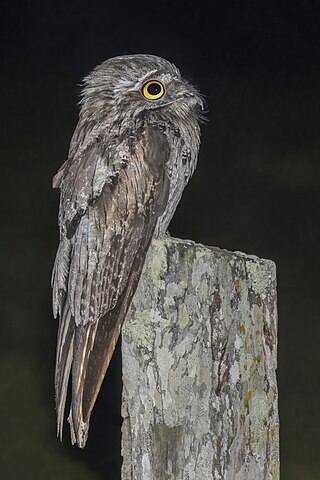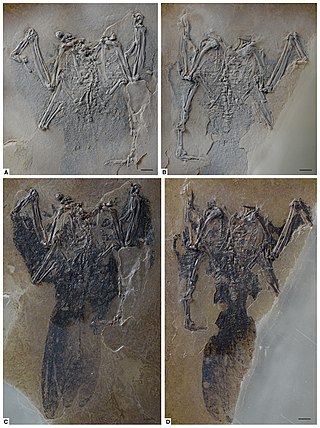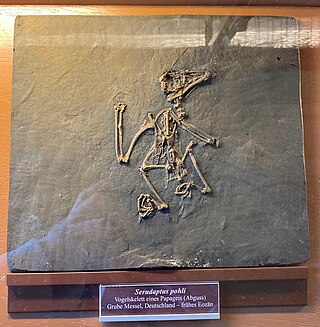
The Coraciiformes are a group of usually colourful birds including the kingfishers, the bee-eaters, the rollers, the motmots, and the todies. They generally have syndactyly, with three forward-pointing toes, though in many kingfishers one of these is missing. The members of this order are linked by their “slamming” behaviour, thrashing their prey onto surfaces to disarm or incapacitate them.

Traditionally, the bird order Apodiformes contained three living families: the swifts (Apodidae), the treeswifts (Hemiprocnidae), and the hummingbirds (Trochilidae). In the Sibley-Ahlquist taxonomy, this order is raised to a superorder Apodimorphae in which hummingbirds are separated as a new order, Trochiliformes. With nearly 450 species identified to date, they are the most diverse order of birds after the passerines.

The mousebirds are birds in the order Coliiformes. They are the sister group to the clade Eucavitaves, which includes the Leptosomiformes, Trogoniformes (trogons), Bucerotiformes, Piciformes and Coraciformes. This group is now confined to sub-Saharan Africa, and it is the only bird order confined entirely to that continent, with the possible exception of turacos which are considered by some as the distinct order Musophagiformes, and the cuckoo roller, which is the only member of the order Leptosomiformes, and which is found in Madagascar but not mainland Africa. Mousebirds had a wider range in the Paleogene, with a widespread distribution in Europe and North America during the Paleocene.

Potoos are a group of birds related to the nightjars and frogmouths. They are sometimes called poor-me-ones, after their haunting calls. The family Nyctibiidae was formerly included with the nightjars in the order Caprimulgiformes but is now placed in a separate order, Nyctibiiformes. There are seven species in two genera in tropical Central and South America. Fossil evidence indicates that they also inhabited Europe during the Paleogene.

Nyctibius is a genus of potoos, nocturnal birds in the family Nyctibiidae.

The Messel pit is a disused quarry near the village of Messel about 35 km (22 mi) southeast of Frankfurt am Main, Germany. Bituminous shale was mined there. Because of its abundance of well-preserved fossils dating from the middle of the Eocene, it has significant geological and scientific importance. Over 1000 species of plants and animals have been found at the site. After almost becoming a landfill, strong local resistance eventually stopped these plans and the Messel pit was declared a UNESCO World Heritage Site on 9 December 1995. Significant scientific discoveries about the early evolution of mammals and birds are still being made at the Messel pit, and the site has increasingly become a tourist site as well.

Strigogyps is an extinct genus of prehistoric bird from the Middle Eocene to Early Oligocene of France and Germany. It was probably around the size of a large chicken or a guan, weighing not quite 1 kilogram (2.2 lb). Apparently, as indicated by the ratio of lengths of wing to leg bones, S. sapea was flightless. Its legs were not adapted to running, so it seems to have had a walking lifestyle similar to trumpeters. Unlike other Cariamiformes, which appear to have been mostly carnivorous, Strigogyps specimens suggest a herbivorous diet.

The great potoo or grand potoo is the largest potoo species and is widely distributed in Central and South America.

The rufous potoo is a species of bird in the family Nyctibiidae. It is the only member of the genus Phyllaemulor. It is found in Brazil, Colombia, Ecuador, French Guiana, Suriname Guyana, Peru, and Venezuela.

Archaeotrogonidae is a prehistoric bird family known from the Eocene and Oligocene of Europe. They are members of Strisores, and are thought to be closely related to nightjars.

Masillaraptor is an extinct genus of masillaraptorid, a group of primitive falconiforms, from the Middle Eocene Messel Pit, Germany. It is a long-legged relative of the living falcons.
Eurofluvioviridavis is a genus of extinct primitive birds from the Middle Eocene Messel Pit, Germany. It contains a single species, Eurofluvioviridavis robustipes. It is related to Avolatavis and Vastanavis, other members of the family Vastanavidae.

Gesomyrmex pulcher is an extinct species of ant in the subfamily Formicinae known from an Eocene fossil found in Europe. G. pulcher is one of only eight species in the ant genus Gesomyrmex to have been described from fossils found in Europe.

Palaeoamyda is an extinct genus of softshell turtle belonging to the family Trionychidae. Remains have been found in the Eocene of Germany.

Strisores, sometimes called nightbirds, is a clade of birds that includes the living families and orders Caprimulgidae, Nyctibiidae (potoos), Steatornithidae (oilbirds), Podargidae (frogmouths), Apodiformes, as well as the Aegotheliformes (owlet-nightjars) whose distinctness was only recently realized. The Apodiformes and the Aegotheliformes form the Daedalornithes.

Messelasturidae is an extinct family of birds known from the Eocene of North America and Europe. Their morphology is a mosaic that in some aspects are very similar to modern hawks and falcons, but in others are more similar to parrots. Initially interpreted as stem-owls, more recent studies have suggested a closer relationship to parrots and passerines. Their ecology is enigmatic.
This is an overview of the paleofauna of the Eocene Messel Formation as explored by the Messel Pit excavations in Germany. A former quarry and now UNESCO World Heritage Site, the Messel Formation preserves what once were a series of anoxic lakes surrounded by a sub-tropical rainforest during the Middle Eocene, approximately 47 Ma.

Scaniacypselus is an extinct genus of basal swifts from the Eocene of Denmark, Germany and France. Many well preserved specimens still showing plumage were discovered in the Messel Pit near Darmstadt, Germany. Species of Scaniacypselus had relatively broader wings than modern swifts and hindlimbs better adapted to perching on tree-branches, indicating that the bird was not as aerial as its extant relatives and likely nested in trees like hummingbirds and treeswifts. Two species are recognized, S. wardi and S. szarskii.
Pseudasturides is an extinct genus of halcyornithid bird from the Middle Eocene Messel pit in Hesse, Germany, and possibly the Isle of Sheppey, United Kingdom. The genus is represented by a single species, Pseudasturides macrocephalus.

Serudaptus is an extinct genus of halcyornithid bird from the Middle Eocene Messel pit in Hesse, Germany. The genus contains one species, Serudaptus pohli, and is known for long, raptorial claws on its zygodactyl feet.



















